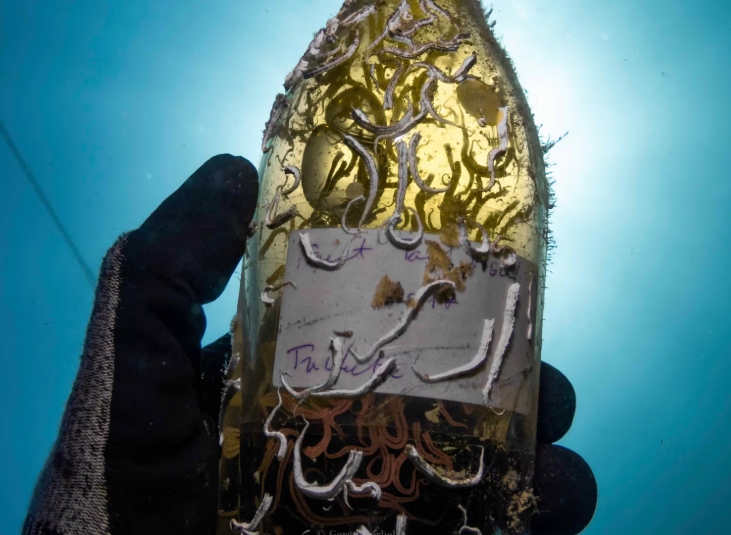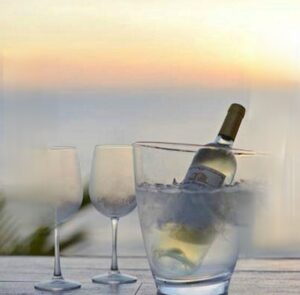The World of Submarine Wine: A New Frontier for Wine Lovers
The wave in the eye of the storm for winelovers is the latest trend in the wine industry; submarine wine—a unique aging process. But is this method really the future of wine aging? And how does Spanish wine fit into this innovative movement? Let’s take a dive in and explore the fascinating world of submarine wine!
What Is Submarine Wine?
Submarine wine, also known as underwater-aged wine, is wine that’s aged beneath the surface of the sea. The idea behind this is that the unique conditions at the bottom of the ocean. Constant temperature, darkness, and higher pressure—create an environment ideal for aging wine. In addition to providing a stable environment, the gentle sea currents help to “move” the wine in subtle ways, which may contribute to a more complex or smoother tasting profile.
The practice of aging wine underwater isn’t new. the Romans used a similar process to add to taste and feel to wines thousands of years ago.
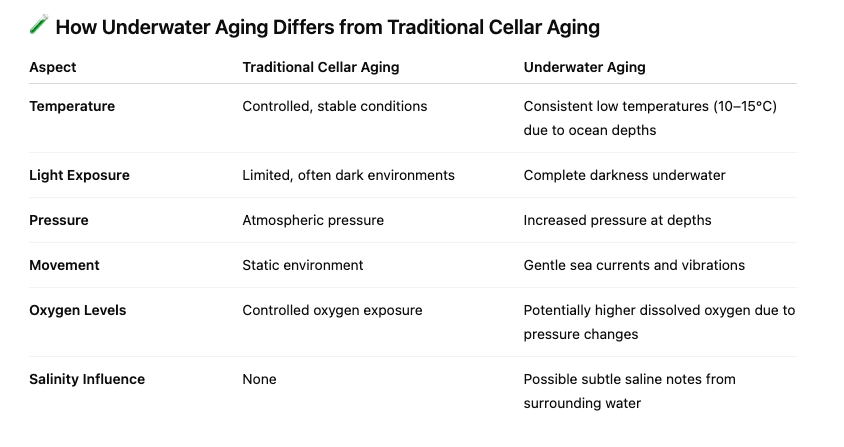
Why Spanish Wine?
Spain has a long history of wine production and a rich tradition of winemaking. Its diverse climates and terroirs have contributed to some of the best wines in the world. It makes sense that Spanish wine would be at the forefront of this innovative trend. Their constant vigilance for eco farming and new reef and biodiversity programs combined for a truly beautiful synergy.
“The bottom of the sea has been colonized for thousands of years. Our wines, structures, and bio-rocks are providing a new surface to be colonized by them. We are proudly working on 2030 blue economy goals such As blue carbon, environmental regeneration, cleaning water, resilience, and increasing the natural capital of the Mediterranean.” Elixsea Wines
Pioneers in underwater wine aging, Bodegas Crusoe Treasure in Spain’s Plentzia Bay, Basque Country. This winery ages its wines in the deep waters of the Bay of Biscay. The cool temperature, lack of light, and natural sea currents provide the perfect conditions for a wine that’s rich in character. For Spanish wine lovers, this represents an exciting new chapter in winemaking tradition.
Other Countries such as Italy, France and Croatia are also producing some types of underwater aged wine.
How Does Submarine Wine Aging Work?
The process is relatively simple, but the logistics are complex. Here’s how it works:
Bottling:
The wine is bottled in traditional glass bottles with corks or other seals to ensure the liquid stays preserved. Wax or other sealed corking is important in the high pressure environment.
Submersion:
The bottles are carefully lowered into the ocean, where they are placed in special cages or crates. These crates keep the bottles safe from the elements and prevent breakage.
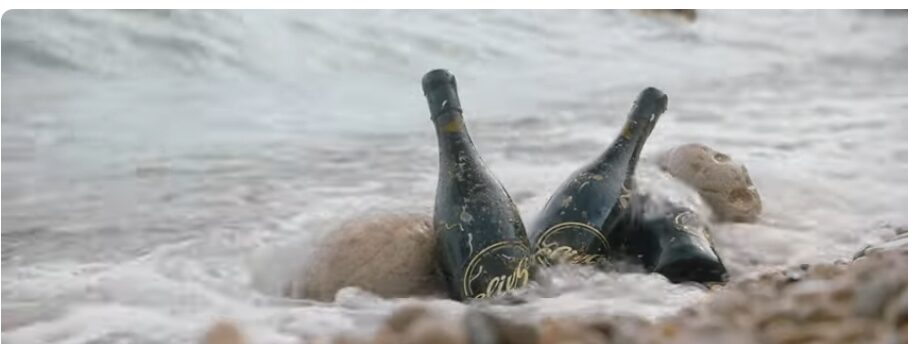
Aging Process:
Once submerged, the wine is left to age for months, sometimes even years. The constant pressure, cooler temperatures, and absence of light all contribute to an environment that may subtly alter the flavour profile of the wine.
Recovery:
After the aging period, the wine is retrieved from the ocean, and the bottles are cleaned and prepared for sale.
The primary appeal of submarine wine for winelovers is the potential for more complex, smooth, and balanced wines. The underwater aging process can bring out more subtle nuances in the wine’s flavour profile, more refined and well-rounded.
Benefits and Techniques: Submarine Wine Aging
- Temperature and Pressure Conditions: At these depths, temperatures typically range between 10°C to 15°C (50°F to 59°F), ideal for slow and consistent aging. The pressure at such depths can range from 1 to 5 atmospheres, which is believed to subtly influence the aging process by slowing down oxidation and improving the wine’s tannin integration.
- Lack of Light: UV rays can degrade the quality of wine over time, but the absence of light underwater prevents any damage to the wine’s delicate compounds.
- Sea Currents and Pressure: Some winemakers believe that the natural pressure at sea depths, combined with the slow, gentle motion of sea currents, encourages subtle changes in the wine. This movement may help the wine “breathe” in a unique way. It can accelerate the aging process and lead to smoother tannins and more integrated flavours.
- Bottles are sealed tightly and often placed in steel cages or crates to prevent damage.
- Some producers use amphorae (clay vessels) or other containers that offer additional insulation or a traditional aesthetic.
Is It Better?
- Pros:
- Unique terroir and story.
- Ecological integration advantages
- Potential for smoother, more integrated wines.
- Novelty attracts consumers and collectors.
- Cons:
- Expensive and logistically complex.
- Limited scientific consensus on whether it improves wine significantly.
- Risk of breakage, contamination, or legal issues in maritime zones.
Spanish Wine and Eco Submarine Aging: A Perfect Pair
While submarine aging can be done with many varieties of wine, Spanish wine stands out as an excellent candidate for this method. The country’s famous wine regions offer a wide array of wines that could benefit from the unique aging conditions beneath the sea.
Rioja, with its bold Tempranillo-based wines, can develop smoother tannins and a more complex flavour profile after a few years underwater caving. Similarly, Cava, Spain’s sparkling wine, benefits from the gentle vibrations of the ocean, allowing its bubbles and flavours to mature more elegantly. Gentle sea currents can cause micro-vibrations that some believe help the wine “breathe” or evolve differently. Oxygen and
“Regenerative wines: Our underwater structures were engineered to increase the growth of marine life in the area. The cages with the bottles inside also provide shelter for the smaller inhabitants, and improve the aging of the wines through the marine currents.” (From the page of ElixSea)
Ecological Benefits and Protection
The process of submarine wine aging is more than just a novel winemaking technique; it also offers significant ecological benefits, making it an excellent option for sustainable winemaking under the 2030 plan. Some key ecological advantages include:
Marine Biodiversity Enhancement
- Artificial Reefs: Many wineries using submarine wine aging place their wine bottles in recycled materials. Over time these become artificial reefs. These submerged structures are a perfect habitat for marine life, including fish, corals, and other aquatic species, enhancing local biodiversity.
- Marine Ecosystem Support: For example, Bodegas Crusoe Treasure in Spain has reported that their submerged wine bottles encourage the growth of marine organisms. Algae to shellfish are supported in the local food chain and ecosystem health.
Reduced Carbon Footprint
- Minimal Land Use: By aging wine underwater, wineries can reduce their reliance on land-based cellars and large buildings. Significant energy inputs for temperature control and other infrastructure can be reduced. The ocean provides a natural, low-energy environment for aging wine.
- Sustainable Shipping Practices: Many underwater wine aging operations are located near coastal areas. There is no need for long-distance transportation which gives reduced carbon footprint. (Moving wine between locations and aging facilities.)
- Hydrodynamic Energy: The underwater environment naturally stabilises the wine with minimal energy use. For example, the cold ocean currents provide consistent cooling, and the pressure naturally slows oxidation. This relies less on active refrigeration or climate control systems in traditional cellars.
Preservation of Marine Environments
- Ocean Health Monitoring: Submarine wine aging projects often work with marine biologists to monitor the health of surrounding ecosystems. These winemaking practices provide valuable data on water quality, biodiversity, and oceanic health, contributing to scientific understanding and conservation efforts.
- Sustainable Tourism: The integration of submarine wine aging with marine tourism helps raise awareness about the importance of preserving oceans. Tours of underwater wine aging sites allow the public to witness firsthand how winemakers are integrating wine production with marine conservation efforts.
2030 Sustainability Goals for Submarine Wine
Global sustainability goals and the 2030 Agenda for Sustainable Development. Submarine wine aging has the potential to contribute to several key areas:
- Sustainable Agriculture (Goal 2): Submarine wine aging aligns with sustainable agricultural practices. It uses natural, eco-friendly methods that protect the environment. The use of natural, low-energy aging environments reduces the carbon footprint of wine production.
- Life Below Water (Goal 14): The practice supports marine conservation by encouraging biodiversity and creating artificial reefs. By promoting sustainable practices, submarine wine aging contributes directly to the protection and restoration of marine ecosystems.
- Climate Action (Goal 13): As submarine aging methods rely on the ocean’s natural conditions, such as temperature stability and pressure. The need for energy-intensive climate control systems is significantly reduced. This contributes to lowering greenhouse gas emissions in winemaking.
The Future of Submarine Wine and Sustainability
Submarine wine is a unique and innovative winemaking technique and also a powerful tool for preserving our oceans. By combining the art of winemaking with the science of marine ecology, submarine wine aging provides a model. For winelovers who are passionate about both exceptional wine and environmental protection, it’s a must.
Notable Spanish Producers Using Submarine Wine Aging
- Bodegas Crusoe Treasure (Spain): This Basque winery is dedicated to creating wines aged underwater. They use the natural conditions of Plentzia Bay to craft wines with exceptional depth and complexity.
- Luis Pérez Winery (Jerez, Spain): Known for experimenting with aging wines in the depths of the Atlantic Ocean. Luis Pérez Winery’s Garum Submarino project involves aging wine in amphorae submerged at 12 meters, bringing a unique Andalusian expression to their wines.
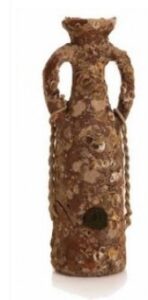
- Edivo Vina (Croatia, but heavily influenced by Spanish techniques): While not technically Spanish, this winery has been experimenting with the method in the Adriatic Sea. Many of their techniques draw inspiration from Spanish innovations.
Why Winelovers Should Try Submarine Wine
For winelovers, the appeal of submarine wine is clear: it’s an entirely new way to experience wine. Enjoying a carefully crafted product but also becoming part of an exciting new trend in the world of winemaking
If you’re a fan of Spanish wine, tasting a bottle that has been aged under the sea can offer a completely different perspective on a classic wine. Whether you’re into rich reds, crisp whites, or sparkling Cava, submarine aging is worth exploration.
In this underwater wave, there’s no better time to dive in and experience the magic of Spanish wine. Aged in fascinating new reef archipelagos; where better to find some treasure of your own?
Links:
Elixsea Underwater Wines, The Dynamic Duo and The Science behind them
Stewart Hill Trade Page for more Spanish Wines

